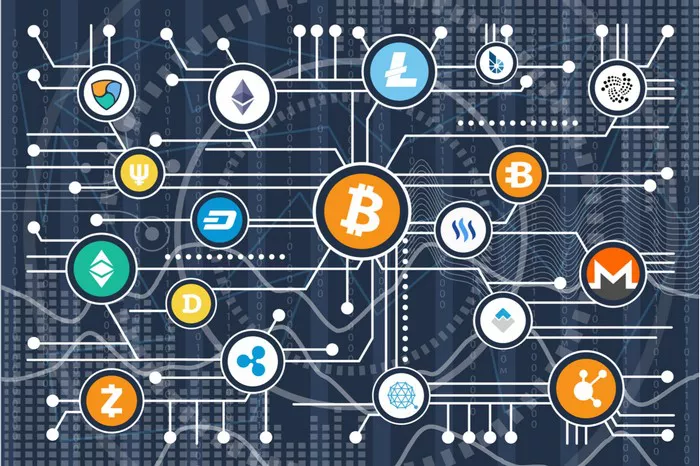The world of cryptocurrencies is constantly evolving, with new projects and coins emerging regularly. While many new cryptocurrencies fail to gain traction, some show significant promise and potential for growth. This article will explore six of the most promising new cryptocurrencies, providing an objective analysis of their features, use cases, and potential impact on the market.
1. Solana (SOL)
Introduction to Solana
Solana is a high-performance blockchain platform designed for decentralized applications and crypto-currencies. It aims to improve scalability without compromising decentralization.
Key Features of Solana
High Throughput: Solana can process up to 65,000 transactions per second (TPS) due to its unique proof-of-history (PoH) consensus mechanism.
Low Fees: Transaction fees on Solana are significantly lower than those on Ethereum, making it an attractive option for developers and users.
Ecosystem Growth: Solana has a rapidly growing ecosystem of decentralized applications (dApps) and decentralized finance (DeFi) projects.
Use Cases for Solana
DeFi Applications: Solana’s high throughput and low fees make it ideal for DeFi projects, which require fast and affordable transactions.
NFT Marketplaces: The platform’s scalability supports the creation and trading of non-fungible tokens (NFTs) without the high fees seen on other blockchains.
Web3 Development: Solana’s developer-friendly environment attracts Web3 developers, contributing to its ecosystem’s expansion.
See Also: 4 Best Cryptocurrency Apps
Future Prospects
Solana’s innovative technology and growing ecosystem position it as one of the most promising new cryptocurrencies. Its ability to handle high transaction volumes and low fees makes it a strong contender in the blockchain space.
2. Avalanche (AVAX)
Introduction to Avalanche
Avalanche is a decentralized platform designed to launch highly scalable and interoperable blockchains. It aims to address the limitations of existing blockchain networks, such as scalability and slow transaction speeds.
Key Features of Avalanche
Subnets: Avalanche allows the creation of customizable blockchains, known as subnets, tailored to specific applications.
Consensus Protocol: The Avalanche consensus protocol enables high throughput and low latency, processing thousands of transactions per second.
Interoperability: Avalanche is designed to facilitate interoperability between different blockchain networks.
Use Cases for Avalanche
DeFi and dApps: Avalanche’s high performance and customizability make it suitable for DeFi applications and decentralized apps.
Enterprise Solutions: Businesses can use Avalanche to create private or public blockchains tailored to their needs.
Cross-Chain Transfers: Avalanche supports seamless cross-chain transfers, enhancing its usability in a multi-chain ecosystem.
Future Prospects
Avalanche’s innovative approach to blockchain scalability and interoperability positions it as a strong competitor in the cryptocurrency space. Its ability to support a wide range of applications makes it a versatile platform for future development.
3. Polkadot (DOT)
Introduction to Polkadot
Polkadot is a multi-chain platform that enables different blockchains to interoperate and share information. It aims to create a decentralized web where users have control over their data.
Key Features of Polkadot
Interoperability: Polkadot enables different blockchains to communicate and share data through its relay chain.
Scalability: The platform’s sharding mechanism allows it to process multiple transactions in parallel, improving scalability.
Governance: Polkadot uses an on-chain governance system, allowing stakeholders to vote on protocol upgrades and changes.
Use Cases for Polkadot
Cross-Chain dApps: Developers can build decentralized applications that leverage the interoperability of Polkadot to interact with multiple blockchains.
DeFi Projects: Polkadot’s scalability and interoperability make it an attractive option for DeFi projects.
Enterprise Solutions: Businesses can use Polkadot to create interconnected private and public blockchains.
Future Prospects
Polkadot’s focus on interoperability and scalability makes it a promising platform for the future of decentralized applications. Its ability to connect different blockchains and support a wide range of use cases positions it as a key player in the cryptocurrency space.
4. Cardano (ADA)
Introduction to Cardano
Cardano is a blockchain platform that aims to provide a more secure and scalable infrastructure for the development of decentralized applications and smart contracts. It is known for its research-driven approach and emphasis on sustainability.
Key Features of Cardano
Ouroboros Consensus: Cardano uses the Ouroboros proof-of-stake consensus algorithm, which is designed to be more energy-efficient than proof-of-work.
Layered Architecture: Cardano’s layered architecture separates the ledger of account values from the reason why values are moved, enhancing security and scalability.
Formal Verification: The platform employs formal verification methods to ensure the correctness of smart contracts and protocols.
Use Cases for Cardano
Smart Contracts: Cardano supports the development of secure and scalable smart contracts for a variety of applications.
DeFi and dApps: The platform’s focus on security and scalability makes it suitable for DeFi projects and decentralized applications.
Sustainable Blockchain Solutions: Cardano’s energy-efficient consensus mechanism appeals to projects focused on sustainability.
Future Prospects
Cardano’s research-driven approach and emphasis on security and scalability position it as a promising platform for the future of decentralized applications. Its commitment to sustainability and formal verification methods make it a reliable choice for developers and users.
5. Chainlink (LINK)
Introduction to Chainlink
Chainlink is a decentralized oracle network that aims to connect smart contracts with real-world data. It provides secure and reliable data feeds for blockchain applications.
Key Features of Chainlink
Decentralized Oracles: Chainlink uses a network of decentralized oracles to provide reliable data feeds to smart contracts.
Secure Data Feeds: The platform ensures the integrity and security of data through its consensus mechanisms and reputation systems.
Wide Adoption: Chainlink is widely adopted by DeFi projects and other blockchain applications that require external data.
Use Cases for Chainlink
DeFi Applications: Chainlink provides reliable price feeds and other data for DeFi projects, enhancing their functionality.
Insurance and Real-World Contracts: The platform enables smart contracts to interact with real-world data, supporting applications like insurance and supply chain management.
Cross-Chain Data: Chainlink’s interoperability features allow it to provide data across different blockchain networks.
Future Prospects
Chainlink’s role as a decentralized oracle network makes it a crucial component of the blockchain ecosystem. Its ability to provide secure and reliable data feeds to smart contracts positions it as a key player in the future of decentralized applications.
6. Polygon (MATIC)
Introduction to Polygon
Polygon, formerly known as Matic Network, is a Layer 2 scaling solution for Ethereum. It aims to improve the scalability and usability of Ethereum by providing faster and cheaper transactions.
Key Features of Polygon
Layer 2 Scaling: Polygon uses sidechains and other scaling solutions to improve Ethereum’s transaction throughput and reduce fees.
Interoperability: The platform supports interoperability between Ethereum and other blockchains, enhancing its usability.
Developer-Friendly: Polygon provides tools and infrastructure for developers to build and deploy scalable dApps.
Use Cases for Polygon
Scalable dApps: Polygon’s Layer 2 solutions make it an attractive option for developers looking to build scalable decentralized applications.
DeFi Projects: The platform’s high throughput and low fees are ideal for DeFi applications that require fast and affordable transactions.
NFT Marketplaces: Polygon’s scalability supports the creation and trading of NFTs without the high fees associated with Ethereum.
Future Prospects
Polygon’s focus on improving the scalability and usability of Ethereum positions it as a valuable platform for the future of decentralized applications. Its ability to provide fast and affordable transactions makes it a promising solution for developers and users.
Conclusion
The cryptocurrency market is dynamic, with new projects continually emerging and evolving. The six cryptocurrencies discussed in this article—Solana, Avalanche, Polkadot, Cardano, Chainlink, and Polygon—each offer unique features and potential for growth. Their focus on scalability, interoperability, security, and real-world applications makes them some of the most promising new cryptocurrencies in the market. As the blockchain ecosystem continues to develop, these platforms are likely to play a significant role in shaping the future of decentralized applications and finance.
Related topics:
























